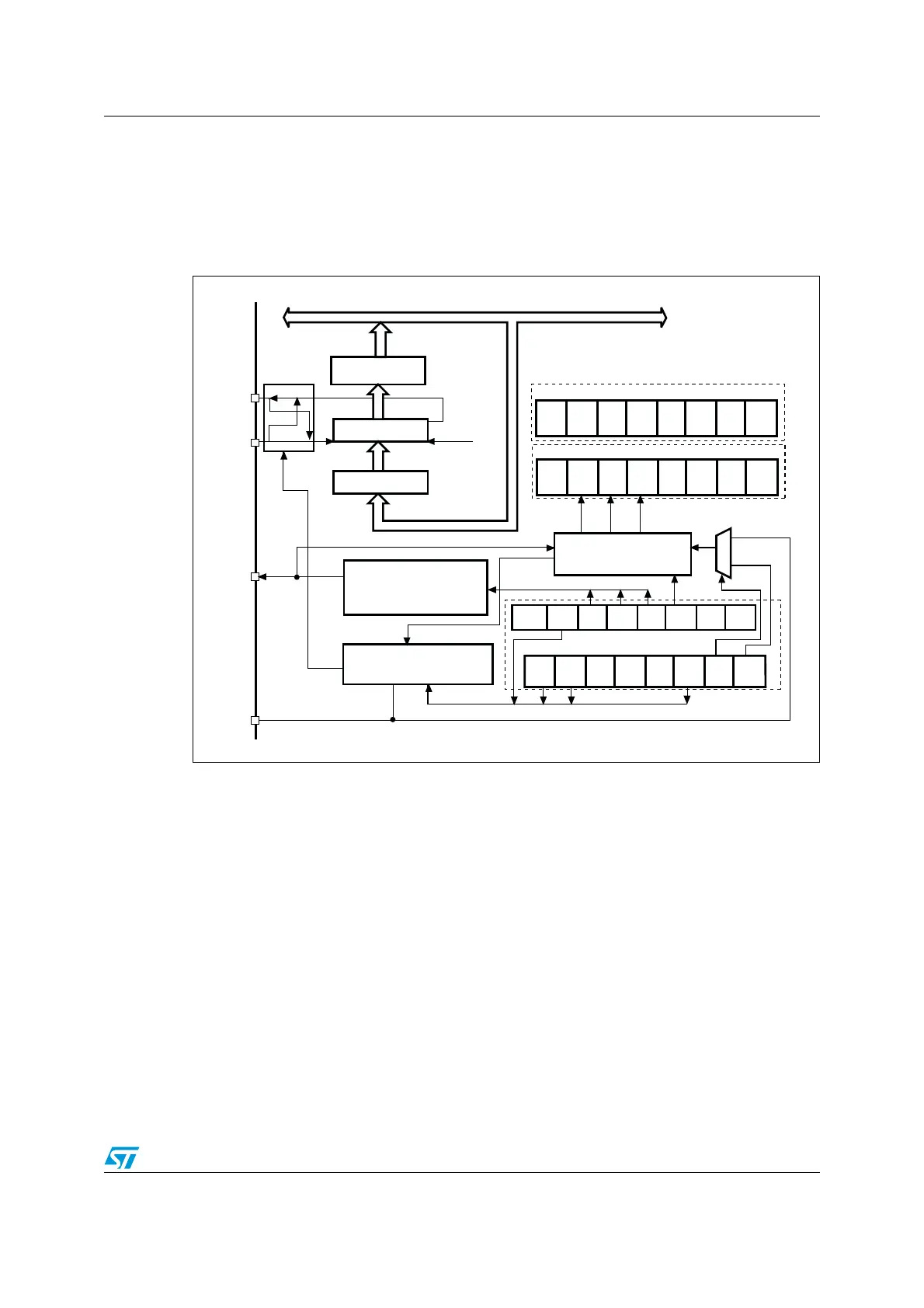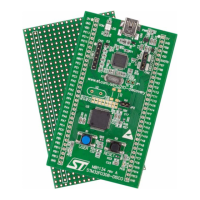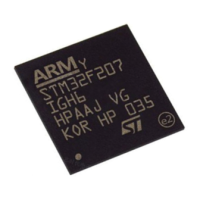RM0008 Serial peripheral interface (SPI)
Doc ID 13902 Rev 12 677/1096
25.3 SPI functional description
25.3.1 General description
The block diagram of the SPI is shown in Figure 236.
Figure 236. SPI block diagram
Usually, the SPI is connected to external devices through 4 pins:
● MISO: Master In / Slave Out data. This pin can be used to transmit data in slave mode
and receive data in master mode.
● MOSI: Master Out / Slave In data. This pin can be used to transmit data in master
mode and receive data in slave mode.
● SCK: Serial Clock output for SPI masters and input for SPI slaves.
● NSS: Slave select. This is an optional pin to select a slave device. This pin acts as a
‘chip select’ to let the SPI master communicate with slaves individually and to avoid
contention on the data lines. Slave NSS inputs can be driven by standard IO ports on
the master device. The NSS pin may also be used as an output if enabled (SSOE bit)
and driven low if the SPI is in master configuration. In this manner, all NSS pins from
devices connected to the Master NSS pin see a low level and become slaves when
they are configured in NSS hardware mode. When configured in master mode with
NSS configured as an input (MSTR=1 and SSOE=0) and if NSS is pulled low, the SPI
enters the master mode fault state: the MSTR bit is automatically cleared and the
device is configured in slave mode (refer to Section 25.3.10: Error flags on page 695).
MOSI
MISO
Baud rate generator
SCK
Master control logic
Communication
control
SPE BR2 BR1 BR0 MSTR CPOL CPHA
BR[2:0]
RXNE
LSB
BIDI
MODE
BIDI
OE
SSM SSI
BSY OVR
MOD
RXNETXE
ERR
TXE
00
DFF
0
SSOE
CRC
EN
0
RX
ONLY
CRC
Next
CRC
ERR
0
1
NSS
IE
F
FIRST
SPI_CR1
SPI_CR2
SPI_SR
TXDM
AEN
RXDM
AEN
IEIE
Address and data bus
Read
Rx buffer
Shift register
LSB first
Tx buffer
Write
ai14744

